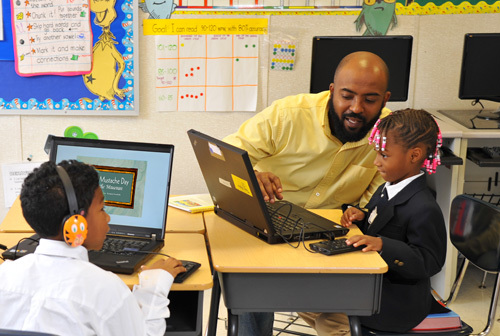While everyone else is having a lot more fun, my colleagues and I sit up late at night writing a free website, the Best Evidence Encyclopedia (www.bestevidence.org), which reviews evaluations of educational programs in reading, math, and science.
The recent reports reinforce an observation I've made previously. When programs are found to have little or no impact on student learning, it is often the case that they provide very little professional development to teachers. Giving teachers lots of professional development does not guarantee positive effects, but failing to do so seems to virtually guarantee disappointing impacts.
This observation takes on new importance as technology comes to play an increasing role in educational innovation. Numerous high-quality studies of traditional computer-assisted instruction programs, in which students walk down the hall or to the back of the classroom to work on technology largely disconnected from teachers' instruction, find few positive effects on learning. Many technology applications appearing in schools today have learned nothing from this sad history and are offering free or low-cost apps that students work on individually, with little professional development for teachers or even any connection to their (non-technology) lessons. In light of the prior research, it would be astonishing if these apps made any difference in student learning, no matter how appealing or well-designed they are.
Alongside the thousands of free apps going into schools, there has also developed an entirely different approach to technology, one that integrates technology with teacher lessons and provides teachers with extensive professional development and coaching. Studies of such programs do find significant positive effects. As one example, I recently saw an evaluation of a reading and math program called Time to Know. In Time to Know, teachers use computers and their own non-computer lessons to start a lesson. Students then do activities on their individual devices, personalized to their needs and learning histories. Student learning is continuously assessed and fed back to the teacher to use in informing further lessons and guiding interventions with individual students.
Time to Know provides teachers with significant professional development and coaching, so they can use it flexibly and effectively. Perhaps as a result, the program showed very good outcomes in a small but high-quality study, with an effect size of +0.32 in reading and +0.29 in math.
There are many other studies of classroom programs that improve student learning, in particular studies of forms of cooperative learning in many subjects and grade levels. As a group, the outcomes reported in these studies are always far higher than those seen in studies of traditional technology applications, in all subjects and grade levels. What is interesting about the study of Time to Know is that here is an unusually positive outcome for a technology application in a rigorous experiment. What is unique about the intervention is that it embeds technology in the classroom and provides teachers with extensive PD. Perhaps classroom-embedded technology with adequate professional development is the wave of the future, and perhaps it will finally achieve the long-awaited breakthroughs that technology has been promising for the past 40 years.

